Yoga Styles
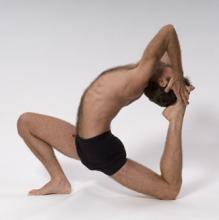
Anusara (a-nu-sar-a), means “flowing with Grace,” “flowing with Nature,” “following your heart.” From Anusara.com, Founded by John Friend in 1997, Anusara yoga is a school of hatha yoga which unifies a life-affirming Tantric philosophy of intrinsic goodness with Universal Principles of Alignment. Anusara yoga is growing quickly all over the world with over 250 certified teachers, 750 licensed Anusara-Inspired yoga teachers, thousands of teachers in training, and hundreds of thousands of students world-wide. Anusara yoga now has a presence on every continent throughout the world, excluding Antarctica.
Anusara yoga's remarkable growth is due in large part to its uplifting philosophy, epitomized by a "celebration of the heart" that looks for the good in all people and all things. Consequently, students of all levels of ability and yoga experience are honored for their unique differences, limitations, and talents. This celebratory vision sets the basis for a yoga school in which the harmony and joy of a tightly knit community of highly trained teachers and fun-loving students is exalted. This community feels like it has the tightness of a family, yet the looseness of a merry band of bohemian artists.
Anusara Yoga has reincarnated in 2012 to become the Anusara School of Hatha Yoga. From AnusaraYoga.comThe vision of the ASHY is to uphold the high standards of the Anusara Yoga methodology as created by founder John Friend, nurture a community that supports grass roots teachers and studios, honors the tradition of Anusara Yoga and the philosophy at its core, and encourages innovation and creative expression. The school will continue to uplift and transform students and teachers of yoga and create a conscious community whose sole purpose is to provide a safe, healthy and joyful environment for all of its participants to grow and become more connected to their swadharma - their true path.
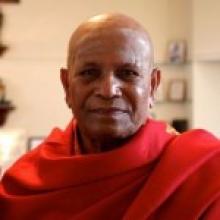
From Ashtanga.com, Ashtanga yoga is a system of yoga recorded by the sage Vamana Rishi in the Yoga Korunta, an ancient manuscript said to "contain lists of many different groupings of asanas, as well as highly original teachings on vinyasa, drishti, bandhas, mudras, and philosophy" (Jois 2002 xv). The text of the Yoga Korunta "was imparted to Sri T. Krishnamacharya in the early 1900's by his Guru Rama Mohan Brahmachari, and was later passed down to Pattabhi Jois during the duration of his studies with Krishnamacharya, beginning in 1927" ("Ashtanga Yoga"). Since 1948, Pattabhi Jois has been teaching Ashtanga yoga from his yoga shala, the Ashtanga Yoga Research Institute (Jois 2002 xvi), according to the sacred tradition of Guru Parampara [disciplic succession] (Jois 2003 12).
Ashtanga yoga literally means "eight-limbed yoga," as outlined by the sage Patanjali in the Yoga Sutras. According to Patanjali, the path of internal purification for revealing the Universal Self consists of the following eight spiritual practices; Yama [moral codes], Niyama [self-purification and study], Asana [posture], Pranayama [breath control], Pratyahara [sense control], Dharana [concentration], Dhyana [meditation], Samadhi [contemplation] (Scott 14-17).
From Ashtanga.com Ashtanga Vinyasa Yoga is a system of yoga transmitted to the modern world by Sri K. Pattabhi Jois (1915-2009). This method of yoga involves synchronizing the breath with a progressive series of postures—a process producing intense internal heat and a profuse, purifying sweat that detoxifies muscles and organs. The result is improved circulation, a light and strong body, and a calm mind. Learn more about the practice of Ashtanga Yoga from the Shri K. Pattabhi Jois Ashtanga Yoga Institute.

Postnatal yoga is designed to balance and restore the physical needs of new mother and baby.
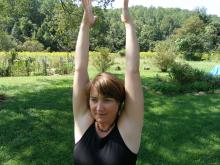
Beginner Yoga describes yoga for the student who is new to yoga. This can generally be described as a practitioner who has practiced for six months to a year. Although some advanced practitioners will describe themselves as always a beginner. It is helpful to go to any yoga class with a beginner's mind.

"The term Bhakti comes from the root 'Bhaj', which means 'to be attached to God'. Bhajan, worship, Bhakti, Anurag, Prem, Priti are synonymous terms. Bhakti is love for love's sake. The devotee wants God and God alone. There is no selfish expectation here. There is no fear also. Therefore it is called 'Parama Prem Rupa'. The devotee feels, believes, conceives and imagines that his Ishtam (tutelary deity) is an Ocean of Love or Prem." Read More: http://www.dlshq.org/teachings/bhaktiyoga.htm
- Sri Swami Sivananda
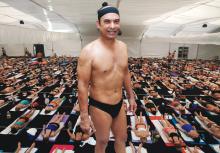
Bikram Yoga is the 26 pose Sequence selected and developed by Bikram Choudhury from Hatha Yoga. View the 26 postures at http://www.bikramyoga.com/BikramYoga/TwentySixPostures.php
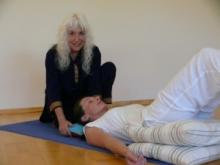
Cardiac yoga is a system of stress management and health promotion designed specifically to focus on the needs of a heart patient. Cardiac yoga is basically artery gentle yoga exercises tailored to the special needs of people who have various cardiac problems, live with a cardiac condition or recover from cardiac diseases. Cardiac yoga allows for the participant to stay seated while learning the different movements, and eventually working their way up to a full yoga routine. Cardiac Yoga is listed as a trademark of founder and director, M. Mala Cunningham, Ph.D
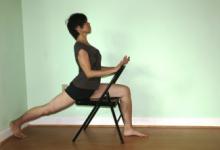
Chair yoga is the term generally used to describe a gentle form of yoga that is practiced sitting in a chair, or standing using a chair for support. The poses, or asanas, are often adaptations of Hatha yoga poses.
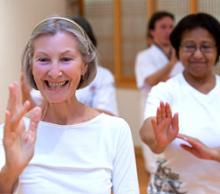
From Dahn Yoga.com, Dahn Yoga is a mind-body practice that combines the ancient wisdom of Ki energy training with modern techniques to maximize the brain's functioning. It is rooted in the rich history of an ancient Asian mind-body practice, Sun Do, and in the wisdom of the Chun Bu Kyung, a 9000 year old text teaching truths about and through Ki energy. Created by Ilchi Lee in 1980, Dahn Yoga as we know it today has something for everyone. The various exercises and workshops offered fit into a comprehensive program called Brain Education System Training.
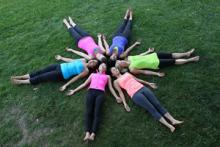
Yoga Nidra is "Yogic Sleep". This is a form of deep relaxation is practiced commonly as part of the ashram life in India. This is the ultimate way to relax and according to the Yogi's should be practiced daily.
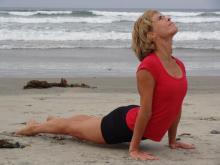
Flow Yoga, sometimes called Vinyasa Flow, developed out of the vinyasa practice linking poses together with either a series of Chaturanga Dandasana, Urdhva Mukha Svanasana and Adho Mukha Svanasana as in Ashtanga Vinyasa Yoga or otherwise literally nyasa - put or place, vi - in a special way.
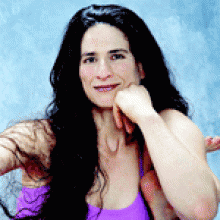
Ana Forrest, creator of Forrest Yoga, has a unique and powerful philosophy and approach. Ana has spent 30 years developing Forrest Yoga specifically to address Our People's (current day) stresses and challenges, both physical and emotional. Forrest Yoga uses intense pose sequences, compassionately taught, to develop skills in awakening each of the senses. It teaches you to bring aliveness, using breath, into every cell of your body, igniting your passion for living. The pillars of Forrest Yoga are Breath, Strength, Integrity and Spirit. Forrest Yoga helps you connect to your core - getting strong and centered. It uses heat, deep breathing and vigorous sequences to sweat out toxins. The long holds in the pose progressions help you flush, oxygenate and rejuvenate every cell.
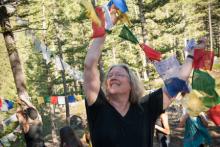
Freedom Style Yoga was developed by Erich Schiffmann. From Moving Into Stillness, "Remember, Yoga is a way of moving into stillness in order to experience the truth of who you are. The practice of yoga is the practice of meditation - or inner listening - in the poses and meditations, as well as all day long. It's a matter of listening inwardly for guidance all the time, and then daring enough and trusting enough to do as you are prompted to do..."
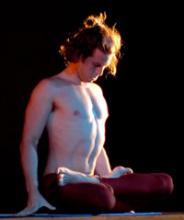
Hatha Yoga ( Ha -"Sun", Tha - "Moon", Yoga - "Union") is the term used to describe the physical practices of yoga, including asanas (postures), pranayama (breath control), mudras (symbolic or ritual gestures), kriyas ( purification techniques), yogic diet, and yoga nidra (yogic sleep or deep relaxation). Remember that the practice of yoga is comprised of the eight limbs ( Yama [moral codes], Niyama [self-purification and study], Asana [posture], Pranayama [breath control], Pratyahara [sense control], Dharana [concentration], Dhyana [meditation], Samadhi [contemplation].

"The goal of Integral Yoga, and the birthright of every individual, is to realize the spiritual unity behind all the diversities in the entire creation and to live harmoniously as members of one universal family. This goal is achieved by maintaining our natural condition of a body of optimum health and strength, senses under total control, a mind well-disciplined, clear and calm, an intellect as sharp as a razor, a will as strong and pliable as steel, a heart full of unconditional love and compassion, an ego as pure as a crystal, and a life filled with Supreme Peace and Joy." - Sri Swami Satchidananda
Integral Yoga® is a synthesis of the various branches of Yoga, Hatha Yoga, Raja Yoga, Bhakti Yoga, Karma Yoga and Jnana Yoga.

ISHTA stands for Integrated Science of Hatha, Tantra, and Ayurveda, or a combination of physical, energetic, and healing practices. ISHTA Yoga is the home of South African Tantric Yoga Master Alan Finger's unique system of yoga. The ISHTA mission is to blend the ancient and contemporary yoga teachings of Hatha, Tantra and Ayurveda into a system that caters to our individual students' needs. Whether you are looking for physical strength or greater peace of mind, ISHTA provides you with a tailored practice to enhance your health and well-being. Yoga has many benefits and at ISHTA, you will not miss out on any of them!
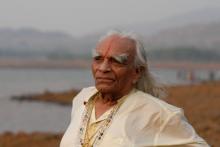
From the Iyengar Yoga National Association of the United States: Yoga is for everyone. No one is too old or too stiff, too fat or thin or tired. A Certified Iyengar Yoga teacher can guide students of all ages and physical conditions to an experience of yoga, which is safe, accessible and rewarding.
Certified Iyengar Yoga instructors are held to an unusually rigorous standard. Only after years of training and evaluation do they become certified. Iyengar Yoga teachers modify the classic asanas (yoga postures) for individual students with the use of props -- such as blocks, blankets and belts. Props allow for a deeper penetration into the posture, as well as a longer stay.
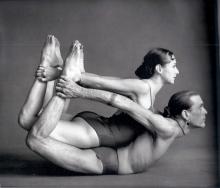
Jivamukti Yoga, co-founded by Sharon Gannon and David Life in 1984 is a physical, ethical, and spiritual practice, combining a vigorous hatha yoga, vinyasa-based physical style with adherence to five central tenets: shastra (scripture), bhakti (devotion), ahimsa (non-harming), nāda (music), and dhyana (meditation).

Jyâna in Sanskrit means "knowledge". Jnana Yoga is the path of Knowledge. Jyana yoga teaches there are four means to Salvation; Viveka, Discrimination, Vairagya, Dispassion, Shad-sampat - The 6 Virtues: Sama-Tranquility (control of the mind), Dama (control of the senses), Uparati (renunciation of activities that are not duties), Titiksha (endurance), Shraddha (faith), Samadhana (perfect concentration) and Mumukshutva, intense longing for liberation from temporal legal traits.
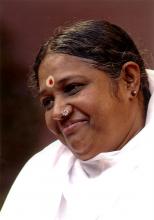
Karma is a Sanskrit term. It means action or deed. Any physical or mental action is Karma. Thinking is mental Karma. Karma is the sum total of our acts, both in the present life and in the preceding births.
Karma Yoga is the path of dedicated participation in the world without any expectations or claiming the fruits of actions for oneself. Every act, whether by thought, word, or deed, is done as an offering to the Divine, the ultimate source and innate goodness within all.

Kripalu Yoga is an inquiry-based yoga methodology that promotes the awakening of the life force (prana). Using classic asanas, pranayama, meditation, and relaxation techniques, Kripalu Yoga increases awareness of body, breath, and mind and encourages natural alignment.Because of its approach, Kripalu Yoga is compatible with all other styles and traditions of yoga practice.
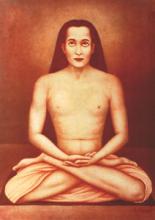
A sincere spiritual seeker who follows the path of Kriya Yoga with love and devotion and a desire for spiritual growth can attain Self-realization — even within one lifetime. This powerful yoga is a manifestation of the many yogas described in the Bhagavad Gita, but primarily it derives from:
• Karma Yoga — detachment from the fruits of actions in the world, and more importantly, from the inner activity of the mind
• Jnana Yoga — a disciplined intellect acquires spiritual knowledge, and this wisdom creates freedom through detachment from the fruits of actions
• Bhakti Yoga — unconditional love is awakened by gratitude and by the joy arising from the oneness with all creation, which is cosmic consciousness
Kriya Yoga finds mention in the ancient spiritual texts of Patanjali Yogasutras "Tapah svadhyayeshvara pranidhani kriyayogah"
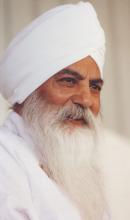
Kundalini yoga is a physical, mental and spiritual discipline for developing strength, awareness, character, and consciousness. Practitioners call Kundalini yoga, the yoga of awareness because it focuses primarily on the practices which expand sensory awareness and intuition in order to raise individual consciousness and merge it with the Infinite consciousness of God. Considered an advanced form of yoga and meditation, its purpose is to cultivate the creative spiritual potential of a human to uphold values, speak truth, and focus on the compassion and consciousness needed to serve and heal others. It was not widely taught by any master teachers outside of India until Yogi Bhajan brought his understanding of the teachings to the United States in 1969.
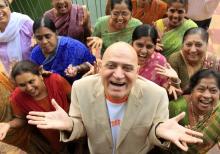
Laughter Yoga combines Unconditional Laughter with Yogic Breathing (Pranayama). Anyone can Laugh for No Reason, without relying on humor, jokes or comedy. Laughter is simulated as a body exercise in a group; with eye contact and childlike playfulness, it soon turns into real and contagious laughter. The concept of Laughter Yoga is based on a scientific fact that the body cannot differentiate between fake and real laughter. One gets the same physiological and psychological benefits.
Laya yoga (लय योग), also called Kundalini Yoga, is the practice whereby the Kundalini energy is raised, and which is attainable through deep meditation (dhyana). Laya Yoga helps the aspirant to attain union with the supreme consciousness. If the body is not kept purified both externally and internally through the practices of Hatha Yoga, the succeeding steps of Laya Yoga would yield no result.
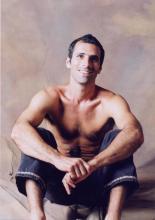
Power Yoga is a general term used in the West to describe a vigorous, fitness-based approach to vinyasa-style yoga. Most power yoga is closely modeled on the Ashtanga style of practice. The term “power yoga” came into common usage in the mid 1990s, when several yoga teachers were looking for a way to make Ashtanga yoga more accessible to western students. Unlike Ashtanga, power yoga does not follow a set series of poses. Therefore, any power yoga class can vary widely from the next. Two American yoga teachers are most often credited with the near simultaneous invention of power yoga: Beryl Bender Birch, based in New York, and Bryan Kest, based in Los Angeles. Not coincidentally, both these teachers had studied with Ashtanga master Sri K. Pattabhi Jois. Using the term power yoga differentiated the intense, flowing style of yoga they were teaching from the gentle stretching and meditation that many Americans associated with yoga. Another name often associated with power yoga is Baron Baptiste. Baptiste has his own method, which is only taught by teachers he certifies.Yoga description reposted from this website: www.santosha.com
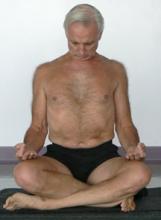

Modifications are required to continue yoga safely through a pregnancy. Prenatal Yoga is a growing field of yoga for pregnant women.
Rāja Yoga ("royal yoga", "royal union", also known as Classical Yoga and Ashtanga Yoga) is concerned principally with the cultivation of the mind using meditation (dhyana) to further one's acquaintance with reality and finally achieve liberation. Raja yoga was first described in the Yoga Sutras of Patanjali, and is part of the Samkhya tradition.
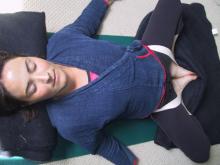
Restorative poses help relieve the effects of chronic stress using props to create a completely supportive environment for total relaxation. Restorative Yoga is taught as part of the Iyengar Yoga System.
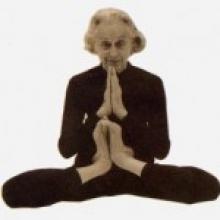
Vanda Scaravelli came to Yoga late in life, after the death of her husband. She had the fortunate opportunity to study Yoga with B.K.S. Iyengar and with T.K.V. Desikachar. She studied with these two incredibly gifted Yoga Masters for several years. Eventually, Vanda came to a point in life where she began to explore Yoga on her own. She was looking for a way to feel more comfortable in the poses. She discovered by grounding heavily through whatever part of her body was touching the earth, and having an effortless breath, the spine would lengthen naturally as a result. This well-rooted connection with the earth allows the earth's energy to freely move throughout the body. A wonderfully fluid wave-like motion moves through the spine, creating space, freedom, and lightness. The breath is an easy breath, never forced. Inhaling in stillness, and exhaling with the flowing movement of your body. This approach works nicely with the natural movement of one's body in relation to gravity and breath awareness. There is a large focus on releasing into gravity and allowing the body to relax and finding the ease in the pose. It is quite liberating. Your mind becomes focused and your body, free of tension.
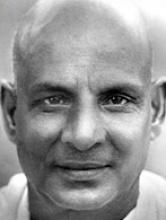
Named after Swami Sivananda, one of the most influential spiritual teachers of the 20th century, the mission is to spread peace, health and joy through yoga. There are four main paths of Yoga - Karma Yoga, Bhakti Yoga, Raja Yoga and Jnana Yoga. Each is suited to a different temperament or approach to life. All the paths lead ultimately to the same destination - to union with Brahman or God - and the lessons of each of them need to be integrated if true wisdom is to be attained. Swami Sivananda recognized that every Yogi, or human being for that matter, possesses and identifies with each of these elements: Intellect, heart, body and mind. He therefore advocated everyone to practice certain techniques from each path. This came to be known as the Yoga of Synthesis. He also taught that in accordance with individual temperament and taste one can emphasize the practice of certain Yogas over others.
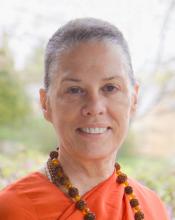
Svaroopa® yoga specializes in core opening and decompression of the spine - from tail to top. This therapeutic style of yoga reaches into and releases the deep-seated layers of spinal tension in your body. This inner opening creates healing and personal transformation, and allows for the illuminative inner experience of your own divine essence. It uses precise angles, soft blankets as props, and hands on personalized adjustments so that the body opens gently, yet deeply from the inside out. This non-athletic, supported practice of yoga helps the process of your yoga practice and allows you to experience the true therapeutic aspects of asanas (yoga poses), called "core opening."
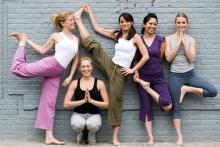
Christy Brock has pioneered the field of teaching yoga to teens and training teachers to teach yoga to teens. With 15 years of study and teaching yoga, Christy is E-RYT 500 certified through Yoga Alliance and attended Piedmont Yoga Studio’s Advanced Studies 18 month program. Christy has traveled to Pune to study with the Iyengars.

TriYoga is a complete and revolutionary system based in ancient Yoga. Experience the kundalini-inspired sequenced flow of yogasana (postures) synchronized with pranayama (rhythmic breath) and mudra (focus). The result is increased energy ... physically, mentally,and spiritually. This gives the mental clarity to manifest one's life with greater awareness.

Universal Yoga is a unified scientific approach to achieving liberation of consciousness through a balanced application of physical, energetic and psychic practices. This system reflects Andrey Lappa's experience with spiritual teachers of the Hindu and Tibetan Buddhist traditions of the Himalayas, his decades of personal practice and research, and his belief in complete freedom and creativity in practice.
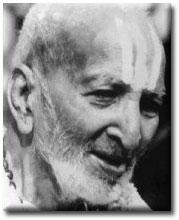
Viniyoga ™ is a comprehensive and authentic transmission of the teachings of yoga including asana, pranayama, bandha, sound, chanting, meditation, personal ritual and study of texts. Viniyoga ™ (prefixes vi and ni plus yoga) is an ancient Sanskrit term that implies differentiation, adaptation, and appropriate application.
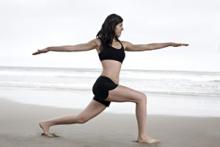
Vinyasa literally translates as nays - put or place, vi - in a special way. Vinyasa yoga is typically a challenging yoga practice of linking poses in a special way.
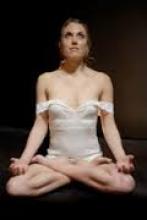
Women's Yoga addresses specifically yoga for women's cycles throughout the month and throughout women's lives. As our bodies change, we need to adapt our yoga practice to address those changes.
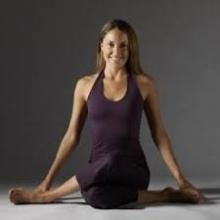
Yin yoga is a style of yoga founded by Paulie Zink. It is a synthesis he created by combining Indian Hatha yoga and several disciplines from the Chinese Taoist tradition with yoga postures and variations, movements, vocalizations, visualization techniques, and insights he developed himself. Some of the unique components Paulie Zink contributed to the amalgamation of Yin yoga include those he created independently, while other constituents include those he derived from Hatha yoga and Taoist disciplines by extrapolating upon certain aspects and principles they contain.

Yoga Nidra is "Yogic Sleep". This is a form of deep relaxation is practiced commonly as part of the ashram life in India. This is the ultimate way to relax and according to the Yogi's should be practiced daily.
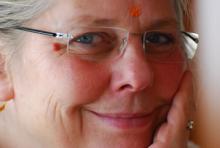
Within Hindu philosophy, the word yoga is used to refer to one of the six orthodox (āstika) schools of Hindu philosophy. Yoga in this sense is based on the Yoga Sutras of Patanjali, and is also known as Rāja Yoga to distinguish it from later schools. Patanjali's system is discussed and elaborated upon in many classical Hindu texts, and has also been influential in Buddhism and Jainism. The Bhagavad Gita introduces distinctions such as Jnana Yoga ("yoga based on knowledge") vs. Karma Yoga ("yoga based on action").Other systems of philosophy introduced in Hinduism during the medieval period are bhakti yoga, and hatha yoga.
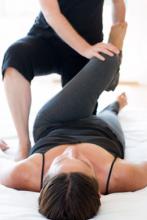
Yoga is beneficial for the health in ways that modern science is just beginning to understand. Even though it has been applied with therapeutic intention for thousand of years, Yoga Therapy is only just now emerging as a discipline in itself. More health care practitioners are starting to include yogic techniques in their approach to healing -- and more yoga teachers give a therapeutic intention to their teaching. People who have never tried yoga before are starting to consider including Yoga in their treatment plan. Also visit IAYT.org
Are you a Yoga Teacher?
Are you a Yoga Student?
Do you Own a Yoga Studio?
